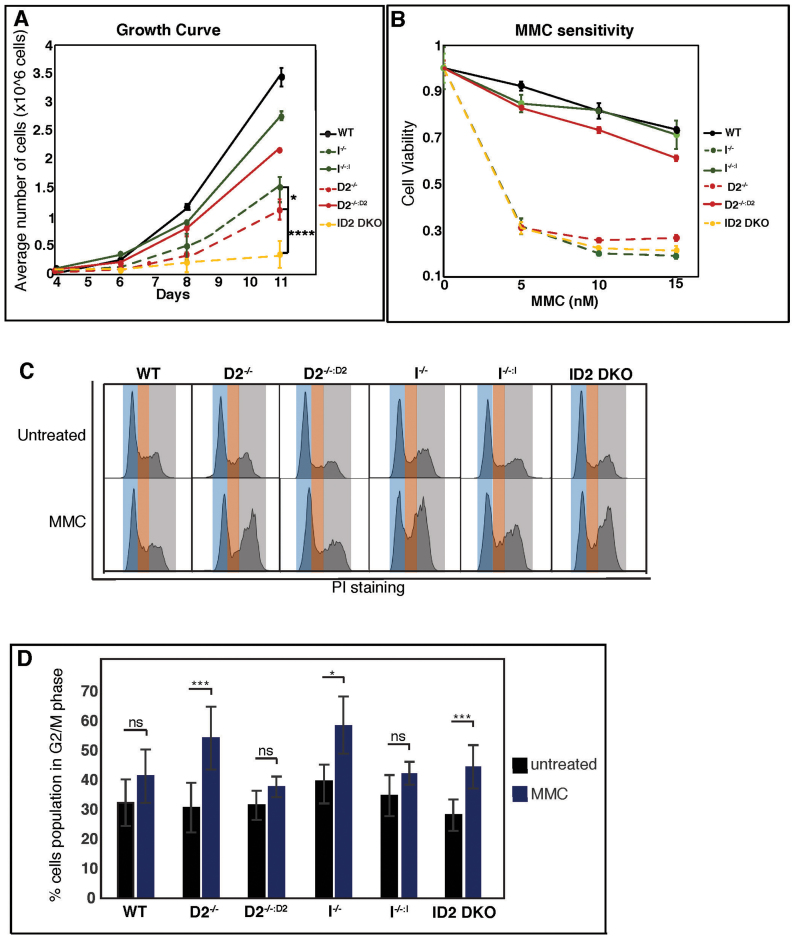Figure 4.
FANCD2 and FANCI contribute differently to cell proliferation and the cellular response to replication stress. (A) The absence of FANCD2 and FANCI affects cell proliferation synergistically. WT, D2−/−(clones #29 and #39), I−/− (clones #28 and #30) and ID2 DKO (clones #1 to #4) cells, as well as the complemented counterparts, were plated according to their plating efficiency and total cell counts were performed in triplicate at days 4, 6 and 8. Data points were averaged between clones of identical genetic backgrounds. Error bars represent the standard deviation. (B) FANCD2 and FANCI act in concert to promote MMC resistance. Cell viability was measured for WT, D2−/−, I−/−, ID2 DKO and complemented cell lines using CellTiter96 Aqueous staining 5 days after the addition of 0, 5, 10 or 15 nM MMC. Results were averaged from a minimum of three replicates and normalized to the average viability of the respective untreated cells. Error bars represent the standard deviation. (C) FANCD2 and FANCI act in concert to activate the MMC-triggered intra-S phase checkpoint. WT, D2−/−(clones #29 and #39), I−/− (clones #28 and #30) and ID2 DKO (clones #1 and #2) cells, as well as the complemented counterparts, were untreated or treated with 10 nM MMC for 20 h, followed by propidium iodide (PI) staining and FACS analysis. Representative histograms of the cell cycle profiles are shown for each cell line. Blue shading represents G1 phase cells, orange shading represents S phase cells and grey shading represents G2/M phase cells. (D) Graphic representation of the percentage of the indicated cell populations present in the G2/M phase of the cell cycle in the absence or presence of MMC. Data points were averaged between clones of identical genetic backgrounds. The average percentage of the G2/M cell population was determined from a minimum of three replicates. Error bars represent the standard deviation and the significance was determined by t-test.

